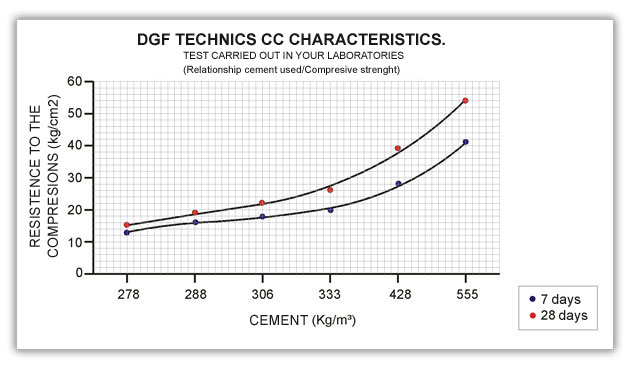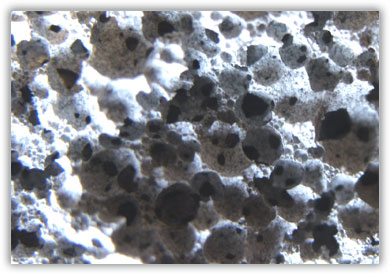So that these three fundamental properties: Compressive strength, sound and thermal insulation are good, it is necessary for the bubbles to be very small and uniform. In turn, this is a direct consequence of the tensioactive properties of the chemical additive with which the cellular concrete is made. Thus, the use of a good additive prevents the precipitation of the cement once it is laid and unit it is forged.
If, on the other hand the additive is of poor quality, and does not fulfill the minimum specifications necessary, in other words, the tensioactive properties are not adequate, large bubbles will form which break to form a cement conglomerate with large air occlusions.
This result in them losing their good compressive strength and acoustic/ thermal insulation properties (see photo).
The first consequence of the above is that the cement precipitates, resulting in an heterogeneous concrete of variable density and discontinuous properties between the surface and the bottom. In other words, there will be a large amount of cement at the bottom and little on the surface, which always result in an undesirable product: very hard in the layers at the bottom and fragile on the surface. In addition, it results in a high consumption cement.
Due to this mixture of excellent characteristics, it is a material recommended by al architects and is increasingly included in construction specifications for new work projects and those of renovation.
 |
| |
| Study carried out with Cement Pórtland CEM II/ B-L 32.5N |
| Name |
Density (Kg/m³) |
Cement
Kg/m³ |
Resistence of thickness 10 cm |
| Moist |
Dry |
Compresion
(Kg/cm²) |
Thermal
Insulation
(°Cm²/w) |
Acoustic
Insulation
dB(A) |
| HC 250 |
400 |
344 |
250 |
14 |
1,11 |
27,50 |
| HC 300 |
500 |
430 |
300 |
22 |
0,81 |
29,11 |
| HC 350 |
570 |
490 |
350 |
28 |
0,62 |
31,14 |
| HC 400 |
650 |
560 |
400 |
37 |
<0,62 |
32,00 |
| |
|
|
|
|
Aislamiento Acústico NBE-CA-88 |
|
| |
 |
| View of CC sample of poor quality 40 % of the bubbles are broken, deformed and of varying sizes. |
|